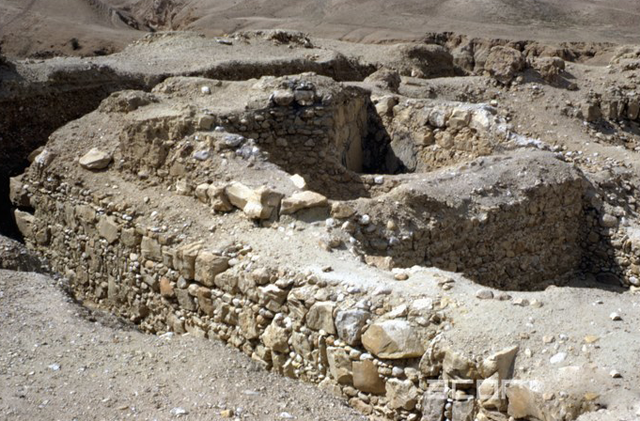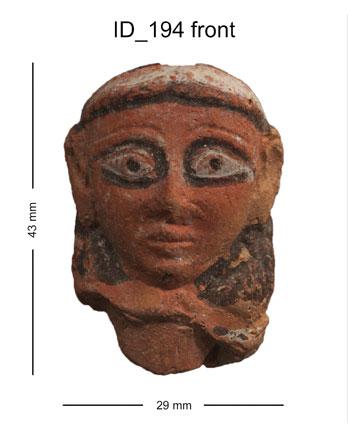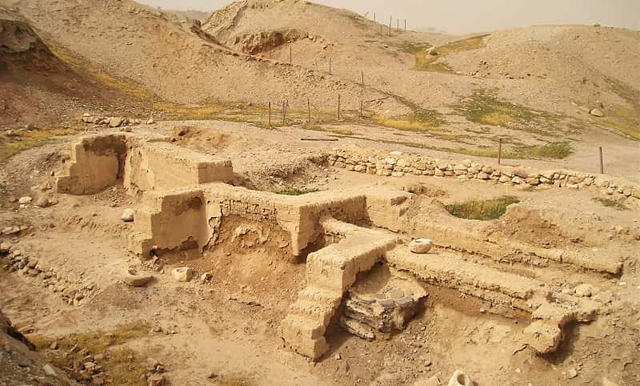You are here
Closer look into Bronze Age iconography:Terracotta goddess figurine unearthed in Khirbet ar Ruseifah
By Saeb Rawashdeh - Nov 28,2023 - Last updated at Nov 28,2023

Ruseifah archaeological site is surrounded by modern urban development (Photo courtesy of Lorenzo Nigro)
AMMAN — During the Covid pandemic,most of archaeological research in Jordan was put on hold. However, a few researchers managed to work in complicated circumstances, including the teams from Sapienza University of Rome and the Department of Antiquity, which found a terracotta female figurine at Khirbet ar Ruseifah in 2020.
About 10 km northeast from Amman, the site is located between the Bronze Age centres of Rabbat Ammon and Tell Al Bireh.
“There is a continuous occupation of Khirbatar-Ruseifah from the Bronze Age until the Ottoman period,” said Professor Lorenzo Nigro from Sapienza University of Rome, adding that Ruseifah was a significant commercial hub during the Roman time.
The earliest finds date to the Early Bronze Age II-III, when Ruseifah was probably a small fortified settlement under the control of the Palace of Batrawy, the “central place” at that time, which is located near Zarqa.
One of the significant discoveriesis a female terracotta figurine made of mould,almost complete except for the left cheek that is eroded and the feet that are broken, as if it was originally standing on a basis. Nigro added that the terracotta is a smooth beige-to-buff-colored fabric with red streaks and a pinkish outer layer, with small chalk inclusions.
“The clay is local, from the nearby riverbed. Its surface was painted, but the traces of such coloured finishing are too deteriorated and therefore imperceptible for the human eye, so they have been identified with the microscope,” Nigro explained, adding that the “Lady of Ruseifah” is 117.99 mm high (its original height should be about 122 mm) and 45.00-26.00 mm wide.
The figurine belongs to a very popular type during the Middle and Late Bronze Age Levant, depicting a lady with the arms extended parallel to the body and the hands shown on the thighs.
“The original coloured look of the figurine was striking and it was seemingly similar to cult statues visible in different temples. This iconography type belongs to a widespread representation of a popular Mesopotamian goddess,” Nigro highlighted.
He added that anydoubts about the divine nature of this personage are swept off by its iconographical characteristics, particularly the frontal view and Hathor’s hairdo. The hairstyle’s locks evoke the image of Inanna/Ishtar, a goddess from ancient Mesopotamian texts about her journey to the Netherworld.
“The head is big, with clearly depicted facial features framed by the Egyptianising Hathoric hairdo, ending with two symmetrical locks curling up away from the face on each shoulder while the eyes are wide and elongated like the ears,” the professor said, adding that a close exam has revealed the traces of a pair of necklaces, one made of a unique chocker, the other being composed of beads, a typical attribute of Ishtar.
The “Lady of Ruseifah” represents a very common type of female figurine, widely attested to in funerary and ordinary life contexts of Late Bronze Age in the Levant, Nigro underlined.
Related Articles
AMMAN – The Levant represented the natural outlet for ancient Egypt which exercised its political dominance since 4th millennium BC.
AMMAN — Ancient Levantine female ceramic figurines could reveal important sociocultural information on women’s roles within the population o
AMMAN — The archaeological team found a dagger in a necropolis north of Tell Sultan thanks to a villager who gave it to the Italian-Palestin



















